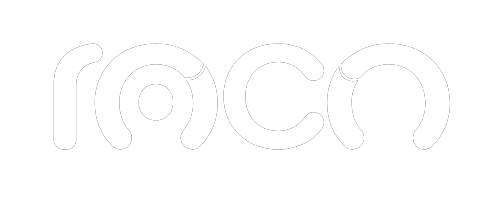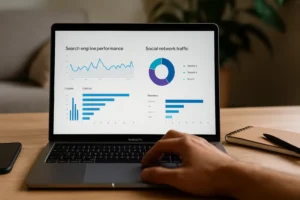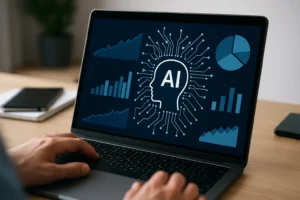En el mundo del desarrollo de software, comprender qué es una librería de programación es fundamental para cualquier programador que busque crear proyectos eficientes y escalables. Una librería de programación es un conjunto de funciones, clases o módulos reutilizables que permiten resolver tareas comunes sin tener que escribir el código desde cero.
In this article, we explain what a programming library is, its role in software development, and why it's a useful tool for programmers of all levels. We also explore its main types, popular examples, and how they can help you optimize your projects.
What is a Programming Library?
A programming library, also called a software library, is a set of functions, classes, and routines that developers can reuse in their programs. These libraries are written in languages like Python, JavaScript, or Java and offer a clear interface for easy integration.
To better understand what a library is in programming, imagine an app that sends automated emails. Instead of programming all the logic from scratch, you can use a library that already handles functions like date handling, which saves time, effort, and reduces errors.
What are Libraries Used For in Programming?
The main purpose of a library is code reuse. Thanks to them, developers can build solutions faster, based on components that have already been tested and optimized.
Therefore, when we ask ourselves what libraries are in programming, the answer is clear: they are reusable tools that streamline development, improve software quality, and allow us to focus on the project's own logic.
Examples of Popular Bookstores
Below, we present some of the most popular libraries in different programming languages:
- jQuery: JavaScript library that facilitates DOM manipulation and interaction on websites.
- NumPy: Python library for numerical calculations and matrix handling.
- react: JavaScript library focused on building dynamic user interfaces.
- TensorFlow: Open-source library for creating and training machine learning models.
- OpenCV: Library for image processing and computer vision.
Optimize your development with programming libraries!
Accelerate your projects by leveraging libraries. Reuse proven code, reduce errors, and focus on creating innovative solutions. Discover it now!
Types of Programming Libraries
Now that you know what a programming library is, there are different types of libraries, classified according to their functionality or field of application. These categories allow developers to choose the most appropriate tools for the type of project. Here are the most common ones:
1. General utility libraries
These are the most versatile. They offer basic functions such as string manipulation, mathematical operations, file management, data validation, and formatting. They are useful in almost any type of application, from simple scripts to full-fledged platforms.
Example: Lodash (JavaScript), Standard Library (Python).
2. User Interface (UI) Libraries
Designed to facilitate the creation of visual interfaces. They include components such as buttons, forms, drop-down menus, and navigation bars. They are ideal for desktop, mobile, or web applications that require user interaction.
Example: Tkinter (Python), Material-UI (React), JavaFX (Java).
3. Graphics and multimedia libraries
They allow you to create, modify, or view images, videos, audio, and graphic elements in general. They are widely used in interactive design, video games, multimedia editors, and creative tools.
Example: p5.js (JavaScript), SDL (C++), PIL (Python).
4. Network and communication libraries
They facilitate connections between applications across networks. They provide methods for sending and receiving data, managing sockets, making HTTP requests, consuming REST APIs, and more. They are essential in web and mobile applications and distributed systems.
Example: Axios (JavaScript), Requests (Python), Boost.Asio (C++).
5. Database access libraries
They allow you to interact with relational and non-relational databases. They help you execute queries, manage connections, perform CRUD operations, and work with ORM (Object-Relational Mapping).
Example: SQLAlchemy (Python), Sequelize (Node.js), JDBC (Java).
6. Machine learning and data science libraries
They focus on data analysis, statistics, and predictive modeling. They include tools for cleaning, transforming, modeling, and visualizing large volumes of information.
Example: Scikit-learn, Pandas, TensorFlow (Python).
7. Cryptography and security libraries
They provide functions to protect applications and data. They allow you to encrypt information, manage passwords, generate authentication tokens, verify file integrity, and apply good security practices.
Example: CryptoJS (JavaScript), Bcrypt (various languages), OpenSSL (C).
8. Libraries for video game development
Designed to handle graphics, sound, physics, animations, and game logic. They allow you to create interactive 2D or 3D experiences, whether in browsers, on mobile devices, or on consoles.
Example: Phaser (JavaScript), Pygame (Python), Unity Engine (C#).
9. Natural Language Processing (NLP) Libraries
They are used to analyze, interpret, and generate text automatically. They are used in chatbots, sentiment analysis, virtual assistants, and intelligent search engines.
Example: NLTK, spaCy (Python), Natural (Node.js).
Take Your Ideas to the Next Level!
At Agencia Roco We can help you better understand what a programming library is and how to apply it to your web projects. If you need advice or want to build your site with modern tools, we're ready to support you.





